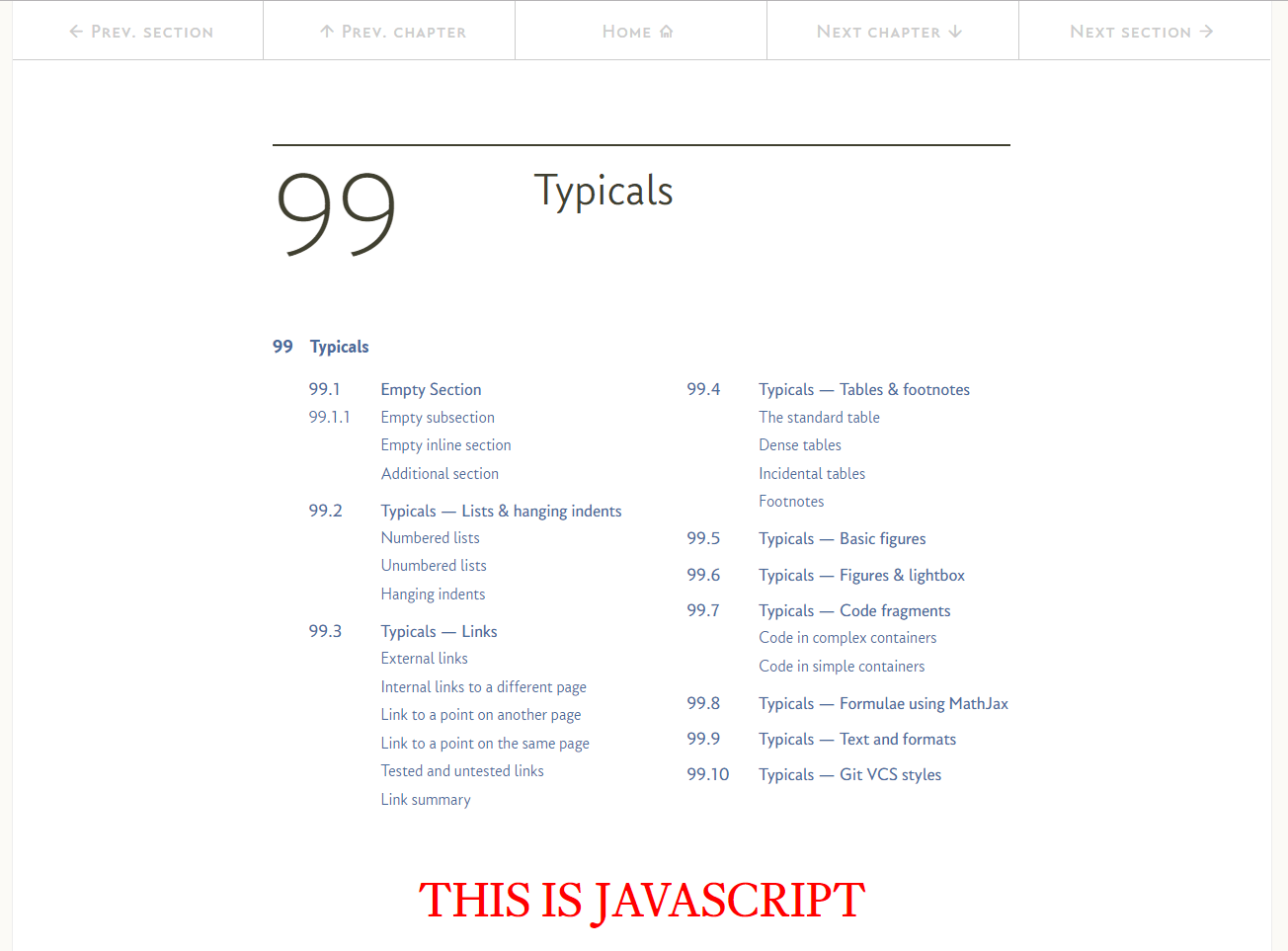16.1.1
JavaScript
JavaScript is a high level programming languages (higher level than HTML and CSS) that is supported by web browsers; it is an object oriented language†1 which at first sight looks a lot like C (lots of braces and squiggly brackets).
In use JavaScript is a lot more forgiving than C, it is not so type sensitive (sensitive to the type of data: integer, floating point number &c.), in this regard it is more like BASIC. In actuality, JavaScript has a lot in common with the Lisp types of language.
To add to the confusion, there is already a programming language called Java, Java and JavaScript are not the same thing at all. Java was developed by Sun Microsystems and JavaScript by Netscape, neither is a derivative of the other.
JavaScript was originally named “Mocha”, another coffee reference, its proper name (that no one ever uses) is ECMAScript, (ECMA historically being the European Computer Manufacturer’s Association), it is also called Jscript.
As far as we are concerned JavaScript can be included in a website and the browser that loads the page will know what to do with it, just like it does with HTML and CSS; JavaScript completes the triumvirate of web languages:
HTML — the web page content
CSS — The web page appearance
JavaScript — Dynamic effects and programmability
| †1 | Object oriented language (OOL) is model for a programming language that is based around an “object” rather than actions (action driven languages are called procedural languages). Objects are concepts that are eventually turned into code and data; objects can be reused and modified in a very controlled way. OOL is considered to be faster to develop, easier to understand and generally more efficient than procedural programming. Virtually all modern programming languages are object oriented. | ||
JavaScript can be used directly within the HTML by inserting it between <script>...</script> elements; alternatively, it can be stored in its own file and loaded from within the HTML, in much the same way that we load a CSS file.
To demonstrate some JavaScript, open one of the template web pages in Brackets (or whichever text editor you are using), I’m using the 99-00-typicals.html page, and add the following after the </header> tag (with the green background):
</header> <!-- End of header -->
<script>
document.write('<br><center>THIS IS JAVASCRIPT'.fontsize(10).fontcolor('red'));
</script>
Save the file and start live preview (or open the file in a web browser). The result will be something like this:
There it is in bright red at the bottom, our first bit of JavaScript — impressive stuff.
Now, if you didn’t get the red text on your version, it is probably because JavaScript is disabled on your browser.
JavaScript can be enabled or disabled by the browser settings, all major web browsers have JavaScript enabled by default.
If you are not sure whether JavaScript is enabled on your browser, go to the following website: www.enable-javascript.com and it will tell you, it also has instructions for enabling JavaScript within all the common web browsers (I give details for Chrome, Firefox and Internet Explorer in the next section).
